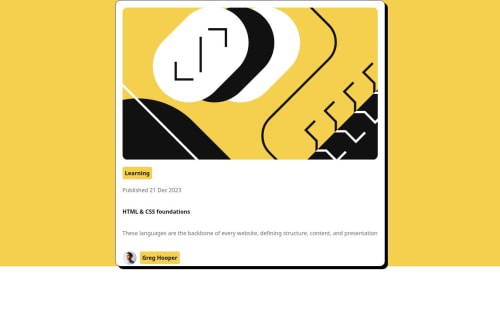Blog-Preview-Card with HTML and CSS

Solution retrospective
About the Blog-Preview-Card project, i'm proud of the flexbox, content width and the responsive design. For the next time i should use css grid instead of flexbox in order to increase my knownledge about this technic
What challenges did you encounter, and how did you overcome them?I didn't especially encounter some difficulties when i worked on this project, because thanks to the QR-Code-Component that allowed me to overcome certain problems that i had about flexbox, content width and responsive design.
What specific areas of your project would you like help with?I should like a help on responsive design because i haven't yet master it perfectly.
Please log in to post a comment
Log in with GitHubCommunity feedback
No feedback yet. Be the first to give feedback on AllcodIn's solution.
Join our Discord community
Join thousands of Frontend Mentor community members taking the challenges, sharing resources, helping each other, and chatting about all things front-end!
Join our Discord